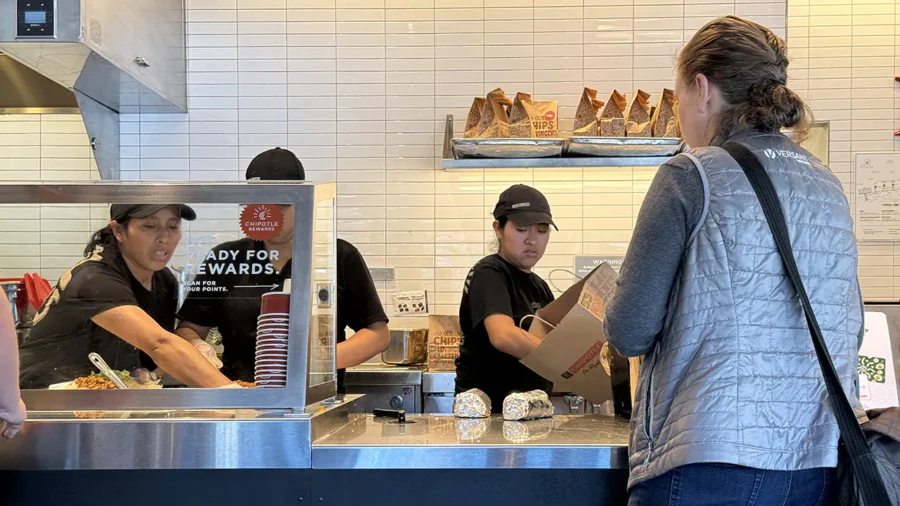In 2025, the minimum wage will increase in 23 states across the United States, providing workers with a better financial buffer for essentials and discretionary spending. Workers in a handful of states will see $15 an hour or higher minimums.
Once considered a pipe dream, the $15 minimum wage threshold is gradually becoming more common, stemming from the Fight for $15 movement, which began with nationwide walkouts by fast-food and other minimum wage job workers in 2012.
According to a report published on Dec. 9 by the National Employment Law Project, 21 states and 48 cities and counties will increase their minimum wages on Jan. 1, 2025.
Additional states, along with a few more cities and counties, plan to raise their minimum wages later in 2025.
States Increasing Minimum Wage
On New Year’s Day, Illinois, Delaware, and Rhode Island will each achieve a $15 minimum wage base for the first time, joining seven other states already at or above this level.
Some states are boosting their minimum wages even higher. In California and New Jersey, the minimum wage for many healthcare workers will be raised to $17 per hour.
Additionally, 47 localities, including over two dozen in California, will also meet or exceed the $15 mark on Jan. 1, with most of these climbing further above $17.
On April 1, the minimum hourly wage for fast-food workers in California surged from $14 to $20, significantly exceeding the state’s standard minimum wage of $16.
Other states are raising their minimum wages but not reaching $15. Missouri will increase its base pay from $12.30 to $13.75, and Nebraska’s minimum wage will rise from $12 to $13.50.
Arizona, Colorado, Connecticut, Ohio, and Virginia, among other states, will be implementing smaller increases to their minimum wages, adjusted according to the consumer price index (CPI) to account for inflation over time.
Since 2009, the federal minimum wage has remained at $7.25 per hour, with efforts to increase it consistently failing to pass Congress. Roughly 30 states, representing over 60 percent of the U.S. workforce, currently have higher minimum wages than the federal standard.
In Burien, Washington, where the state minimum wage is already $16.28, the minimum pay will jump to $21.16 for employers with 500 or more workers in King County, setting the nation’s highest pay floor.
Impacts of Raising the Minimum Wage
Later in 2025, additional states and several dozen localities will also raise their minimum wages. As a result, a total of 23 states and 65 cities and counties—a record 88 jurisdictions—will increase their minimum wage at some point next year.
By 2026 or 2027, Alaska, Florida, Hawaii, Missouri, and Nebraska are set to reach the $15 minimum wage mark. This will bring the total to 16 states, encompassing nearly half of the U.S. workforce, with minimum wages of $15 or higher within the next three years, according to the National Employment Law Project and the Economic Policy Institute.
However, analysts caution that this increase could significantly affect the labor market and consumer behavior.
A 2021 Congressional Budget Office report concluded that raising the federal minimum wage to $15 an hour would boost incomes for millions and lift 900,000 Americans out of poverty but could also lead to a reduction in employment by approximately 1.4 million workers over several years.
However, a study from the University of California’s Berkeley Institute for Research on Labor and Employment found no evidence that the wage increase led to price hikes or labor disruptions.

